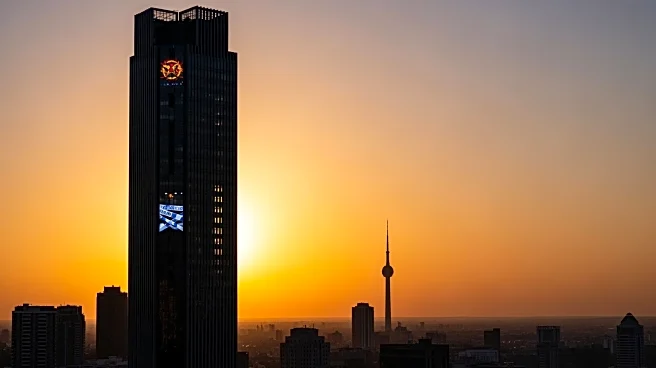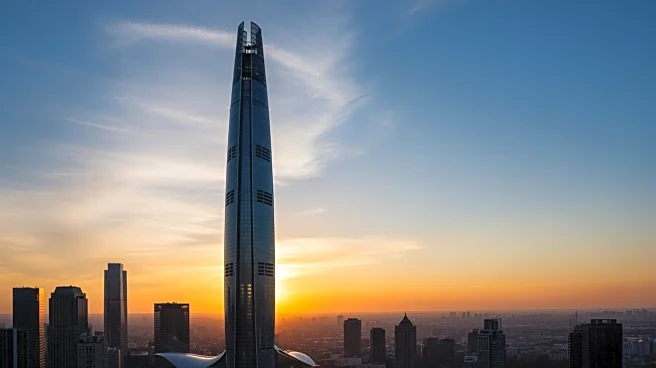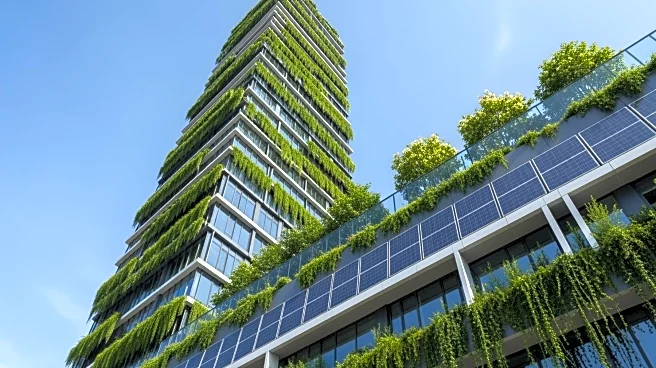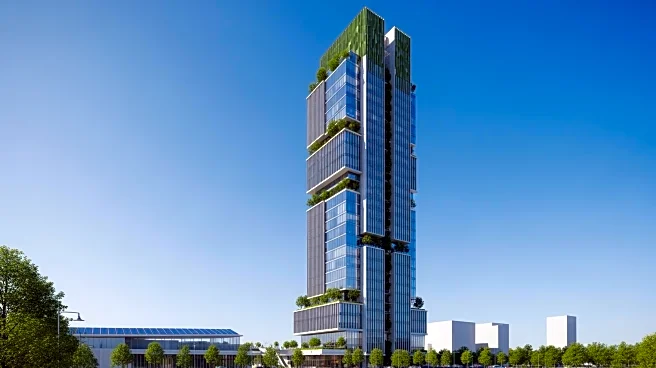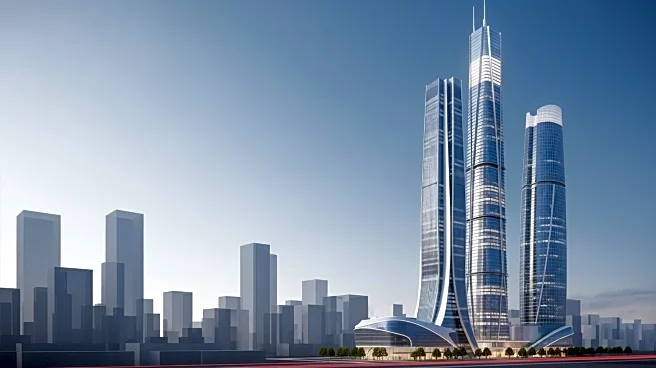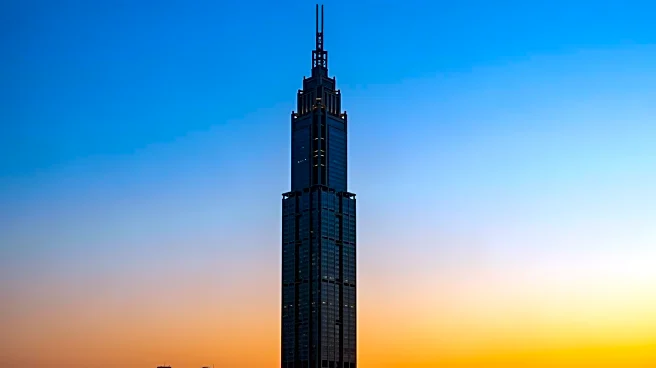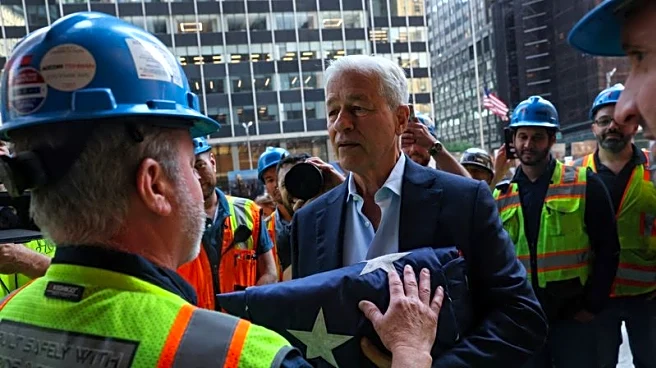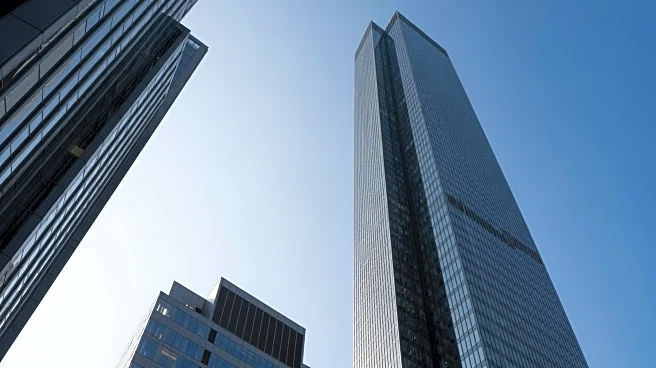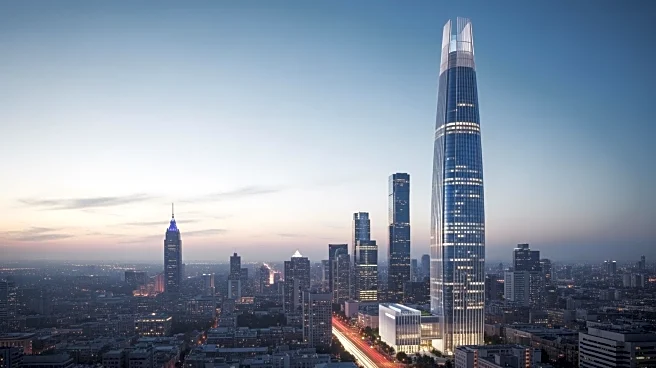What's Happening?
JPMorgan Chase has officially opened its new 60-story headquarters at 270 Park Avenue in New York City, marking a significant post-pandemic development in the city's architectural landscape. The copper-toned
steel tower, which cost approximately $3 billion, replaces the Union Carbide Building and is set to house around 10,000 of JPMorgan's 24,000 New York-based employees. The building, designed by Foster + Partners, includes 2.5 million square feet of space and features five new artworks commissioned by the bank. The headquarters will consolidate JPMorgan's operations, which were previously spread across several buildings near Grand Central Station, and will host the bank's trading operations across eight floors.
Why It's Important?
The opening of JPMorgan Chase's new headquarters is a testament to the bank's commitment to in-office work and its investment in New York City. This development is significant for the city's economy, as it represents a major corporate investment and could influence other companies to follow suit in prioritizing physical office spaces post-pandemic. The building's completion also highlights the resilience and recovery of the construction and real estate sectors in New York. Additionally, the consolidation of JPMorgan's operations into a single location may enhance operational efficiency and foster a stronger corporate culture.
What's Next?
With the completion of the new headquarters, JPMorgan Chase plans to renovate its building at 383 Madison Avenue, further indicating its long-term commitment to maintaining a strong presence in New York City. The bank's decision to invest in physical office space may prompt discussions among other corporations about the future of work and the balance between remote and in-office work environments. Stakeholders in the real estate and construction industries will likely monitor the impact of this development on market trends and office space demand in the city.
Beyond the Headlines
The unveiling of JPMorgan Chase's new headquarters may have broader implications for urban development and architectural innovation in New York City. The building's design and engineering, which involved the systematic demolition of the old Union Carbide building, reflect advancements in construction technology and sustainable building practices. This project could serve as a model for future developments in urban centers, emphasizing the importance of integrating public spaces and art into corporate environments.
